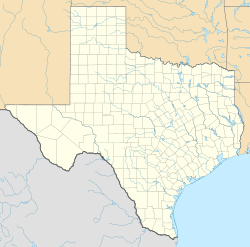Bexar County Courthouse | |
 The Bexar County Courthouse is a historic building in downtown San Antonio, Texas, USA. | |
 Interactive map showing the location for Bexar County Courthouse | |
| Location | Main Plaza San Antonio, Texas, USA |
|---|---|
| Coordinates | 29°25′25″N98°29′37″W / 29.42361°N 98.49361°W |
| Built | 1891-1896 |
| Architect | James Riely Gordon |
| Architectural style | Romanesque Revival |
| NRHP reference No. | 77001426 |
| RTHL No. | 399 |
| Significant dates | |
| Added to NRHP | August 29, 1977 |
| Designated RTHL | 1976 |
The Bexar County Courthouse is a historic building in downtown San Antonio, Texas, United States.
Contents
The building was designed by architect James Riely Gordon, and borders Main Plaza, along with such other architectural landmarks as the Cathedral of San Fernando. The style is Romanesque Revival, and the main material used is red sandstone. Ground was broken for Gordon's structure on August 4, 1891, and the cornerstone was laid December 17, 1892. After several delays, construction was fully completed in 1896. The building was added to the National Register of Historic Places in 1977.
The Courthouse currently functions as the county seat of Bexar County.
In the years of 1870-1910, almost every town in Texas had built a courthouse. The Bexar County Courthouse is the largest and oldest courthouse that is still operating in Texas.





